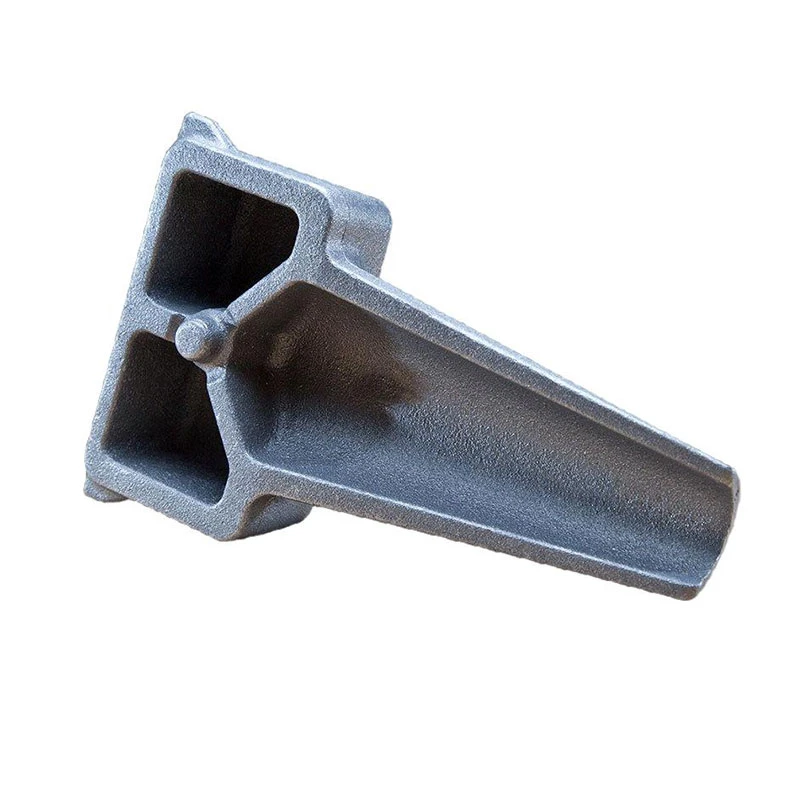green sand castings
Green Sand Castings The Art and Science of Metal Casting
Green sand casting is a widely used method in the metal casting industry, known for its versatility, cost-effectiveness, and ability to produce high-quality castings. This process utilizes a mixture of sand, clay, and water, creating a mold that can withstand the rigors of molten metal pouring. The term green refers to the moisture content in the sand rather than the color, emphasizing the use of unbaked, reusable sand molds.
Composition of Green Sand
The primary components of green sand include silica sand, which provides the bulk and strength, clay, which acts as a binder, and water to activate the clay. The most commonly used clay in green sand is sodium bentonite due to its excellent binding properties. When combined, these elements form a malleable mixture that can be shaped into molds for various applications, from automotive parts to intricate machinery components.
The proportion of these ingredients is crucial. Typically, a green sand mixture comprises around 90% silica sand, 5% clay, and 5% water. The quality of the sand and the type of clay can significantly affect the casting's finish and dimensional accuracy. Thus, foundries often conduct rigorous testing to ensure consistency in their material composition.
Molding Process
The green sand casting process begins with creating a pattern, an exact replica of the final product. Patterns can be made from various materials, including metal, wood, or plastic, and they are designed to accommodate the shrinkage of the metal during cooling.
Once the pattern is prepared, it is placed in a flask—a container used to hold the sand mixture. The green sand is then packed around the pattern, allowing it to take shape. The sand is compacted to create a sturdy mold capable of withstanding the pressure of the molten metal.
After the pattern is removed, the mold halves are assembled, and the necessary channels are created for pouring the molten metal. Venting systems may also be included to allow gases to escape during the pouring process. This stage is critical because it ensures that the mold is free of air pockets, which can lead to defects in the final casting.
green sand castings

Advantages of Green Sand Casting
One of the primary advantages of green sand casting is its cost-effectiveness. The materials used to make green sand are inexpensive, and the process allows for the reuse of sand, reducing waste and minimizing overall costs. Furthermore, green sand casting is incredibly versatile, making it suitable for a wide range of metals, including aluminum, iron, and bronze.
Another advantage is the ability to produce complex shapes with a good surface finish. The fine grains of the sand can capture intricate details, leading to high-definition castings. This is particularly important in industries that demand precision and quality, such as aerospace and automotive.
Moreover, the green sand casting process is relatively straightforward and requires less specialized equipment compared to other methods like investment casting or die casting. This accessibility makes it a popular choice for both small-scale operations and large manufacturing facilities.
Challenges and Improvements
While green sand casting has numerous benefits, it is not without challenges. One of the main issues is addressing the quality of the final product. Variations in sand composition, moisture content, and packing density can lead to defects such as sand inclusions, blowholes, and warping. To mitigate these issues, foundries are increasingly adopting advanced technologies, including automated molding machines and real-time monitoring systems, to enhance process control and consistency.
Additionally, environmental concerns about sand usage and disposal have prompted foundries to explore sustainable alternatives, such as synthetic sands and reclaimed materials, to minimize their ecological footprint.
Conclusion
In summary, green sand casting represents a time-honored method in the foundry industry, combining both art and science. Its ability to create durable and complex components at a relatively low cost makes it an enduring choice for various applications. As technology advances and sustainability becomes more paramount, the green sand casting process will continue to evolve, ensuring its relevance in the ever-changing landscape of metal manufacturing.
-
Top Extras Casting Solutions Die Casting and Sand Casting Experts High-Quality Casting and Die Casting ServicesNewsJun.10,2025
-
Top SS Casting Manufacturer Aluminum Die Casting Manufacturer China Precision Die Casting Company SupplierNewsJun.10,2025
-
High-Quality Brass Casting Sand for Precision Sand Casting Brass at HomeNewsJun.10,2025
-
Affordable Aluminum Sand Casting Solutions Custom PartsNewsJun.09,2025
-
High-Quality China Sand Casting Services Cost-Effective & ReliableNewsJun.09,2025
-
Premium Hot Stamping Parts Durable Plastic Decor SolutionsNewsJun.09,2025















